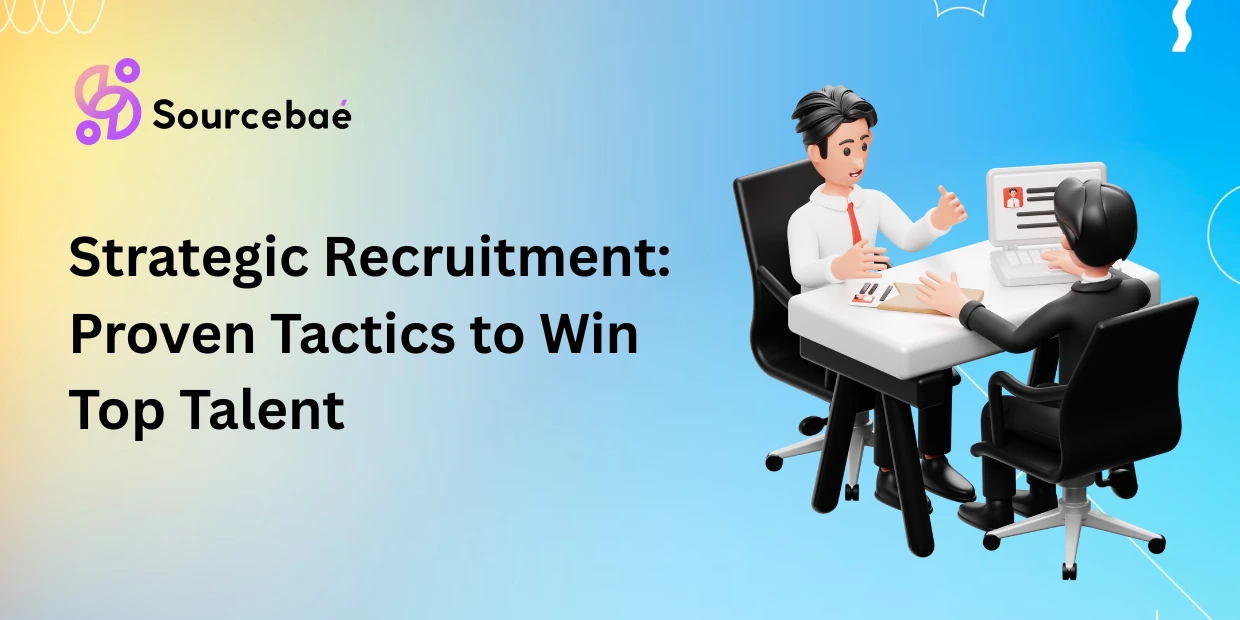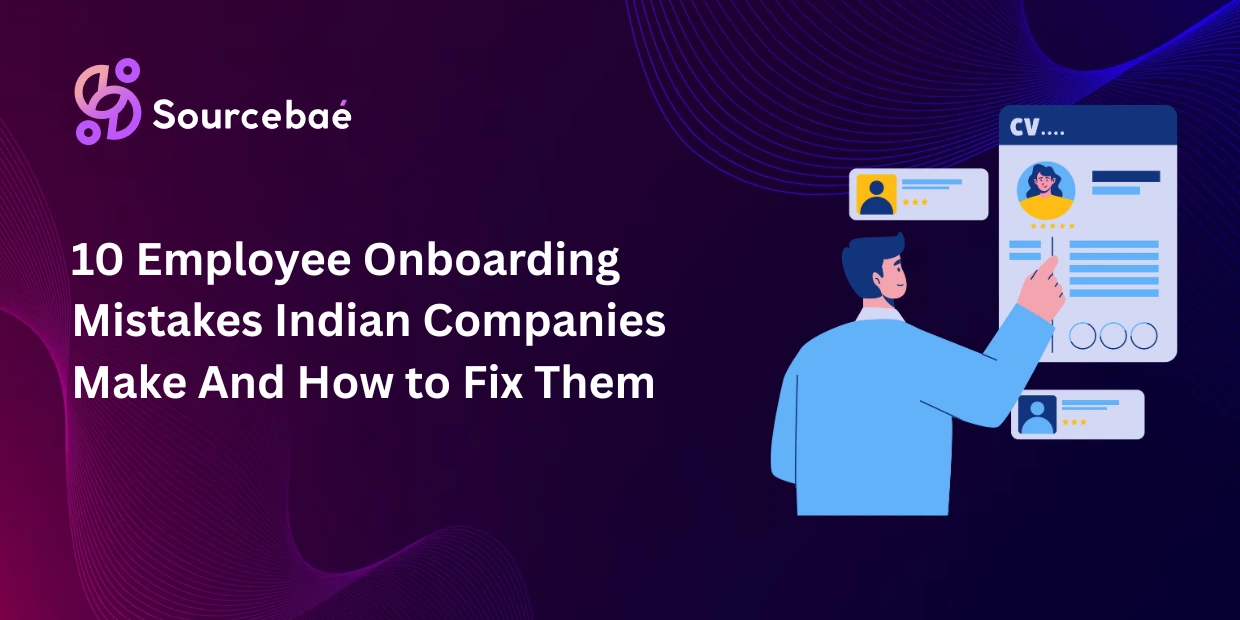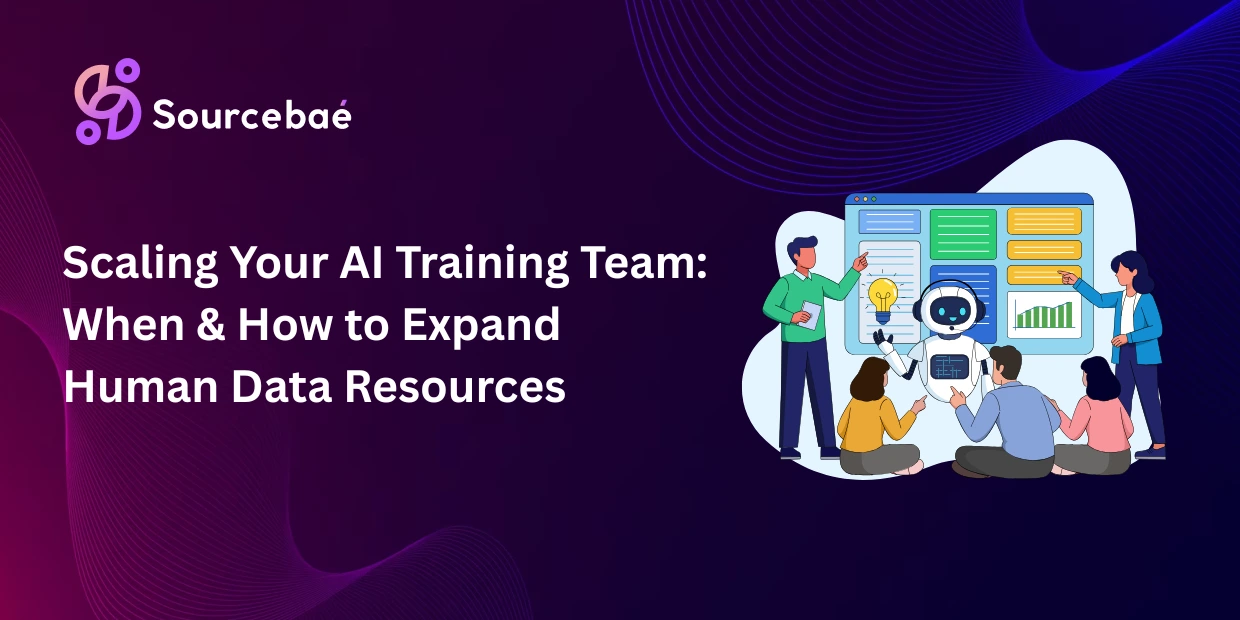Strategic recruitment costs businesses real money when done wrong. According to a survey conducted by Harris Poll, one wrong hire costs a company approximately $14,900. In today’s competitive job market, strategic recruitment has become the linchpin of success for organizations looking to thrive.
What exactly is strategic recruitment? It’s the tactical process of recruiting that aligns with your business objectives. Unlike traditional hiring methods, strategic hiring focuses on identifying candidates who not only meet job requirements but also have the skills and qualities necessary to contribute to your organization’s long-term success. Therefore, developing effective recruitment strategies is essential for accelerating business growth.
In this comprehensive guide, we’ll explore everything you need to know about the strategic recruitment process. From creating a strategic recruitment plan to implementing solutions that can help you find candidates globally across a potential talent pool of 1 billion profiles, we’ll provide practical insights to transform your hiring approach.
What is Strategic Recruitment?
The essence of strategic recruitment lies in its proactive and thoughtful approach to talent acquisition. Strategic recruitment is the use of skilled selling, employer branding, and recruitment-directed marketing in sourcing talent, enabling companies to respond effectively to dynamic market conditions. It goes beyond simply filling vacancies to create a defined strategy that aligns with organizational goals.
Definition and how it differs from traditional hiring
Strategic recruitment involves a systematic process focused on finding the right talent through three primary components: skilled selling, employer branding, and recruitment marketing. Unlike traditional recruitment, which tends to be reactive and focused on filling positions as they become vacant, strategic recruitment takes a proactive approach that anticipates future needs.
Traditional hiring often leads to hasty decisions, mismatched skills, and higher turnover rates. In contrast, strategic recruitment creates a foundation for sustained growth by identifying key roles essential for achieving business objectives and understanding the competencies required to fill these roles effectively.
Why strategic recruitment matters today
Several factors make strategic recruitment increasingly crucial in 2025:
- Talent scarcity: The tight job market makes finding suitable talent harder than ever, especially for in-demand skill sets
- Higher candidate expectations: Today’s candidates expect excellent recruitment experiences
- Steep competition: Companies increasingly compete for talent through employer branding, working conditions, and compensation
- Cost of bad hires: According to a Boston Consulting Group survey, , highlighting the importance of getting hiring decisions right28% of respondents planned to leave their jobs in 2024
Furthermore, strategic recruitment directly impacts a company’s bottom line by driving key outcomes such as increased revenue, improved productivity, and substantial innovation.
Strategic recruitment vs strategic hiring
While often used interchangeably, strategic recruitment and strategic hiring serve different purposes. Recruitment focuses on sourcing and selecting candidates for vacant positions, functioning as a reactive process. It handles everything about “how” to fill positions.
Conversely, strategic hiring defines the “why” and “when” of talent acquisition. It operates on a larger scale, considering the alignment of the workforce with the company’s long-term vision. According to a LinkedIn report, companies with strong employer branding , demonstrating the financial benefits of this approach.spend 43% less per hire
Strategic recruitment is an ongoing process that continues beyond filling an open position by constantly engaging with potential hires to maintain a talent pool for future needs. It’s about building awareness among talented professionals and convincing them your organization is the right fit for their goals.
Core Principles of Strategic Recruitment

Image Source: SlideBazaar
To implement strategic recruitment successfully, organizations must embrace four essential principles. These fundamentals transform conventional hiring into a strategic advantage that drives organizational success.
Aligning recruitment with business goals
The foundation of any recruiting effort is a clearly defined strategy that illustrates brand messaging, target candidates, and effective closing approaches. Companies that achieve 34% higher employee performance, retain 30% more valuable talent, and outperform competitors by 16%. Effective recruitment processes maximize resource utilization by identifying and focusing on positions with the highest business impact – generally revenue-producing jobs and roles in high-margin growth business units.align talent with their business strategy
Regular touchpoints with department leaders about upcoming initiatives provide essential context for prioritizing hiring efforts. Subsequently, mapping business objectives to required talent ensures recruitment activities directly support organizational goals.
Focusing on long-term talent needs
Whereas traditional recruitment focuses on filling vacancies with a short-term view, strategic recruitment revolves around a deeper understanding of current and future business priorities. This proactive approach includes forecasting future talent requirements based on business projections.
Primarily, this principle involves building talent pipelines, identifying succession plans, and developing internal mobility pathways. Organizations benefit from taking an ongoing approach to upskilling and reskilling, which addresses skills gaps and helps keep pace with technological changes.
Building a strong employer brand
Employment branding – the process of building your external image as an excellent place to work – has the highest impact and represents the only true long-term recruitment strategy. By proactively making it easy for potential applicants to understand what makes working at your firm exciting, you dramatically increase the quality and quantity of applicants.
A positive employer brand is critical in today’s competitive job market. Without one, hiring and retaining talented employees becomes challenging and costly. Indeed, companies with strong employer branding . Your employer brand encompasses your organization’s mission, values, and culture, giving employees powerful reasons to work for you.spend 43% less per hire
Creating a candidate-centric experience
Essentially, recruiting must follow customer relationship management principles since a significant part involves “selling” candidates on applying for and accepting the job. Candidates are 38% more likely to accept job offers after positive experiences.
The candidate-centric approach includes clear communication, respecting candidates’ time, and establishing feedback cycles that ensure they feel appreciated throughout. Often, the number-one reason candidates reject offers is how they were treated during hiring. Notably, poor experiences can damage your reputation, with 60% of job seekers unwilling to buy certain companies’ products after negative recruitment interactions.
Building a Strategic Recruitment Plan

Image Source: AIHR
Creating an effective strategic recruitment plan requires a methodical approach that transforms hiring from a reactive task into a competitive advantage. By following these five key steps, you can build a recruitment framework that consistently delivers quality talent.
1. Define your hiring objectives
Initially, establish clear recruitment objectives that align with your company’s broader strategic goals. These objectives form the backbone of your recruitment process, guiding every subsequent decision. Effective objectives should enhance organizational performance, minimize recruitment costs, and ensure legal compliance. For instance, if your organization anticipates growth in a specific department, your objectives should reflect these future talent needs while considering current team strengths and skill gaps.
2. Identify key roles and prioritize them
Not all positions impact your business equally. Prioritize roles based on their strategic importance and business impact. Revenue-generating positions, mission-critical jobs, and leadership roles typically receive highest priority. Additionally, consider positions with hard-to-find skill sets or those in strategic business units. Position prioritization allows recruiting teams to “do more with less” and can . Take inventory of your current process and evaluate which roles would cost the organization most if left unfilled.increase business impact by up to 20%
3. Develop accurate job descriptions
Well-crafted job descriptions serve as powerful tools for attracting qualified candidates. Beyond listing responsibilities, include information about your company culture, specific impact the role will have, and both essential and preferred qualifications. Effective job descriptions establish clear expectations and help candidates determine if they’re a good fit, ultimately improving your quality of hire. To hire talent with sourcebae, you need job descriptions that communicate your unique value proposition and set realistic expectations.
4. Choose the right sourcing channels
Selecting appropriate sourcing channels significantly impacts recruitment success. Options include , company career pages, employee referrals, social media platforms, and industry-specific websites. Moreover, analyze which channels yield the best candidates for specific roles by tracking metrics like applicant quality and interview-to-hire ratios. This data-driven approach enables you to allocate resources more effectively toward channels that consistently deliver quality talent.job boards (which attract 60% of job seekers)
5. Set a realistic recruitment budget
Finally, establish a comprehensive recruitment budget that accounts for all potential expenses. This includes recruiter capacity, advertising costs, recruitment software, and onboarding expenses. Calculate your cost-per-hire using the formula: (Internal Cost + External Cost) ÷ Total Number of Hires. Furthermore, build in a buffer for unexpected costs that invariably arise during hiring. A thoughtfully planned budget allows you to make strategic decisions about resource allocation while maintaining accountability for recruitment outcomes.
Optimizing the Strategic Recruitment Process
Enhancing recruitment effectiveness requires continuous optimization of your processes. As recruitment landscapes evolve, organizations must adapt their strategies to stay competitive and efficient.
Using data to drive hiring decisions
Data-driven recruitment transforms hiring from guesswork to a strategic process based on measurable insights. In fact, now believe data is critical for talent acquisition decisions. By tracking metrics like source of hire, time-to-fill, and quality of hire, you gain objective insights to refine your approach. Recruiters spend approximately 40% of their time reviewing resumes, plus 72% of hiring managers have missed strong candidates due to human error. Implementing data analytics helps identify these inefficiencies and prevents qualified candidates from being overlooked.82% of companies
Leveraging technology and automation
Automation streamlines repetitive tasks, allowing recruiters to focus on human-centered activities. Rather than replacing humans, automation amplifies abilities by handling administrative work that consumes over half of recruiters’ time. Modern tools like applicant tracking systems, AI-powered resume screening, and chatbots can significantly reduce hiring costs while increasing efficiency. To hire talent with sourcebae, implementing these technologies can accelerate your recruitment process while maintaining quality.
Creating a talent pipeline for future needs
A talent pipeline is a proactively built pool of qualified candidates for future positions. This approach helps you respond quickly to hiring needs, particularly for hard-to-fill roles. LinkedIn Talent Insights can help you understand which positions would benefit most from pipelines. By setting concrete targets and maintaining regular communication with passive candidates, you create a warm pipeline of potential hires, reducing time-to-fill by up to 20%.
Expanding to global strategic recruitment
Global recruitment expands your talent pool exponentially. With in countries like the U.S., China, and Japan, looking internationally becomes increasingly valuable. Primarily, a global recruitment strategy requires understanding local employment regulations, building a culturally appropriate employer brand, and standardizing technology across regions. This approach helps source candidates with future-focused skills while addressing regional skill disparities.unemployment rates below 4%
Measuring success with recruitment KPIs
Key performance indicators provide the compass for strategic recruitment optimization. Aside from basic metrics like time-to-hire and cost-per-hire, consider tracking candidate experience scores, quality of hire, and sourcing channel efficiency. These metrics help identify bottlenecks, evaluate sourcing effectiveness, and quantify your recruitment ROI. Critically, recruitment dashboards help visualize this data, enabling quick identification of trends and informed decision-making.
Conclusion
Strategic recruitment stands as the cornerstone of organizational success in today’s competitive talent landscape. Throughout this guide, we’ve seen how this approach transforms hiring from a reactive task into a powerful business advantage. Undoubtedly, companies that align their recruitment efforts with business objectives gain significant advantages—from reduced hiring costs to improved employee retention.
The five-step strategic recruitment plan outlined earlier provides a practical framework anyone can implement. First, define clear objectives. Second, identify and prioritize key positions. Third, craft compelling job descriptions. Fourth, select appropriate sourcing channels. Finally, establish realistic budgets for recruitment activities.
Additionally, data-driven decision-making emerges as essential for recruitment success. Companies must track relevant metrics to continuously refine their approach. Technology serves as a valuable ally here, automating routine tasks while allowing recruiters to focus on relationship-building aspects of hiring.
Looking beyond immediate needs proves equally important. Talent pipelines prepare organizations for future growth, while global recruitment expands access to specialized skills. Therefore, strategic recruitment must evolve from a short-term tactic to a fundamental business strategy.
The cost of poor recruitment decisions——underscores why this approach matters. Strategic recruitment ultimately delivers what organizations need most: qualified candidates who contribute to long-term success rather than merely filling empty seats.approximately $14,900 per wrong hire
Your company deserves more than reactive hiring. Strategic recruitment offers the path forward for organizations ready to transform their talent acquisition from a business necessity into a genuine competitive advantage.
Key Takeaways
Strategic recruitment transforms hiring from reactive gap-filling into a proactive business strategy that aligns talent acquisition with long-term organizational goals and drives measurable results.
• Strategic recruitment costs 43% less per hire than traditional methods while delivering higher-quality candidates who align with business objectives
• Build talent pipelines proactively rather than waiting for vacancies – this reduces time-to-fill by up to 20% and prevents costly hiring mistakes
• Data-driven recruitment decisions eliminate 72% of human errors in candidate screening and optimize resource allocation across sourcing channels
• Employer branding and candidate-centric experiences are essential – 60% of candidates won’t buy from companies after poor recruitment interactions
• Global recruitment strategies expand your talent pool beyond local constraints, especially crucial when unemployment rates drop below 4%
The financial impact is clear: one wrong hire costs approximately $14,900, while companies with strong strategic recruitment achieve 34% higher employee performance and retain 30% more valuable talent. Success requires measuring KPIs, leveraging automation for administrative tasks, and maintaining focus on long-term talent needs rather than immediate vacancy filling.
FAQs
Q1. What is strategic recruitment and how does it differ from traditional hiring? Strategic recruitment is a proactive approach that aligns talent acquisition with long-term business goals. Unlike traditional hiring, which focuses on filling immediate vacancies, strategic recruitment involves identifying candidates who can contribute to the organization’s future success and creating a talent pipeline for anticipated needs.
Q2. Why is strategic recruitment important in today’s job market? Strategic recruitment is crucial due to talent scarcity, increased candidate expectations, and steep competition for skilled professionals. It helps companies attract better candidates, reduce hiring costs, and improve employee retention. Organizations with strong strategic recruitment practices often see higher employee performance and outperform competitors.
Q3. What are the key components of a strategic recruitment plan? A strategic recruitment plan typically includes defining clear hiring objectives, identifying and prioritizing key roles, developing accurate job descriptions, choosing appropriate sourcing channels, and setting a realistic recruitment budget. This systematic approach helps organizations consistently attract and hire quality talent.
Q4. How can data and technology improve the recruitment process? Data-driven recruitment decisions can eliminate human errors in candidate screening and optimize resource allocation. Technologies like AI-powered resume screening and applicant tracking systems can significantly reduce hiring costs and increase efficiency. These tools allow recruiters to focus on relationship-building aspects of hiring while automating administrative tasks.
Q5. What role does employer branding play in strategic recruitment? Employer branding is critical in strategic recruitment as it helps attract high-quality candidates and reduces hiring costs. A strong employer brand communicates the organization’s mission, values, and culture, giving potential employees compelling reasons to work for the company. Positive candidate experiences during recruitment also contribute to a strong employer brand and can influence a candidate’s decision to accept a job offer.






